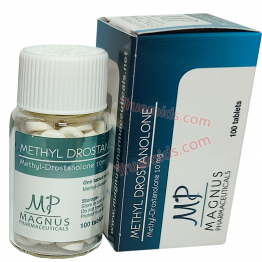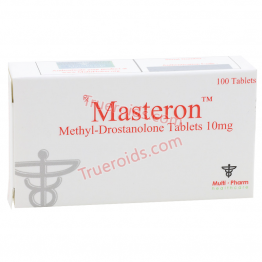Methyl Drostanolone
Methyl Drostanolone, commonly known as methyldrostanolone and popularly referred to as Superdrol, is a synthetic anabolic-androgenic steroid (AAS) that is administered orally. Although it was not intended for medical purposes, it was legally available for purchase as a bodybuilding supplement for a span of nine years¹². Here's a deeper look into its facets:
Medical Application:
Methasterone was not officially distributed as a prescribed medication. However, its non-17α-alkylated equivalent, drostanolone propionate, was commercialized by Syntex Corporation under the trade name Masteron¹.
Non-Medical Utilization:
In 2005, Methasterone made a resurgence as a "designer steroid". It entered the market as the primary component in a dietary supplement called Superdrol. This introduction might have been an effort to evade regulations like the U.S. Anabolic Steroids Control Act of 1990, as methasterone had not been classified as a Schedule III class anabolic steroid when the act was enacted¹³.
Adverse Effects:
Methasterone has hepatotoxic properties, posing a risk to liver health. Several instances of liver damage linked to its usage have been recorded in medical literature¹.
Chemical Composition:
Methasterone goes by various names such as 2α,17α-dimethyl-5α-dihydrotestosterone (2α,17α-dimethyl-DHT) or 2α,17α-dimethyl-5α-androstan-17β-ol-3-one. It is categorized as a synthetic androstane steroid and a 17α-alkylated derivative of DHT. The additional methylation renders methasterone approximately 3-4 times more anabolic than Masteron and marginally more anabolic than oxandrolone⁴.
It's crucial to note that the utilization of methasterone as a supplement lacked medical endorsement, and its potential hazards warrant careful consideration. Prioritize health and safety above all when contemplating the use of performance-enhancing substances.
Magnus Pharmaceuticals Methyl Drostanolone 100tab 10mg/tab
Magnus Pharmaceuticals Methyl Drostanolone 100tab ..
€58.00
MultiPharm Healthcare MASTERON 100tab 10mg/tab
Manufacturer: MultiPharm Healthcare1. Origins and ..
€58.00
Showing 1 to 2 of 2 (1 Pages)


